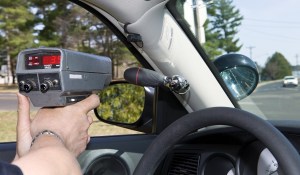 Speeding is a risky driving behavior that causes approximately one-third of all traffic fatalities, according to the National Highway Traffic Safety Administration (NHTSA). The faster a driver is going, the more difficult it is to stop. As people rush to get to their destinations, they’re putting their own lives, and the lives of those they’re sharing the road with, in danger.
Speeding is a risky driving behavior that causes approximately one-third of all traffic fatalities, according to the National Highway Traffic Safety Administration (NHTSA). The faster a driver is going, the more difficult it is to stop. As people rush to get to their destinations, they’re putting their own lives, and the lives of those they’re sharing the road with, in danger.
July 12-18 was the Commercial Vehicle Safety Alliance’s Operation Safe Driver Week. In 2020, the initiative focused on speeding, as the CVSA reported that the less traffic on the roads due to the COVID-19 pandemic led to drivers ignoring some safety laws, including posted speed limits. Operation Safe Driver Week strived to decrease the “severe spike in speeding” seen throughout the pandemic and beyond.
Why Do Drivers Speed?
In today’s busy world, unplanned traffic congestion is a problem that can keep drivers from arriving on time to work, appointments, school, plans with friends, etc. This leads to drivers responding by speeding as the traffic clears, driving recklessly by changing lanes frequently, or even road rage incidents.
Sometimes, drivers increase their speed simply to keep up with the flow of traffic, even when they may not feel comfortable doing so. Impaired drivers under the influence of drugs or alcohol may also be guilty of speeding, as their judgment becomes impaired or they even may not be conscious of how fast they’re actually going. Drivers who engage in distractions like texting, talking on a cellphone or conversing with passengers also tend to speed more than those who are focused on the road ahead of them.
Whatever the reason for speeding, the numbers don’t lie: the NHTSA reports that in 2017, speeding was the cause of over 9,700 deaths. Speed limits are posted for a reason – to keep drivers safe.
Why Is Speeding Dangerous?
When drivers travel at unsafe speeds, several dangerous things can happen. Let’s take a closer look at the variety of reasons speeding is a reckless and risky driving behavior:
Drivers can lose control of the vehicle
The faster a driver goes, the easier it becomes to lose control of the car. This is especially true when the road changes abruptly or during inclement weather. Adjusting to curves or sudden objects in the road becomes difficult, if not impossible, when speeding.
Reaction time is reduced
Speeding does not allow for the proper time to react to dangerous situations, as it increases the distance the vehicle travels while giving the driver less time to take note of his or her surroundings. Braking distance is reduced drastically at excessive speeds.
Crashes are more severe
How fast a driver chooses to speed can literally mean the difference between life and death in a car crash. The faster one drives, the more damage there will be should an accident occur. Additionally, the resulting injuries to those involved will be more severe.
Comprehensive Driver Training from DriveTeam
Learn how to become a safe, confident driver with DriveTeam. We offer comprehensive teen driving classes and corporate driver training to teach safe driving tips to those of all ages. Contact us today for more information.
Trackbacks/Pingbacks